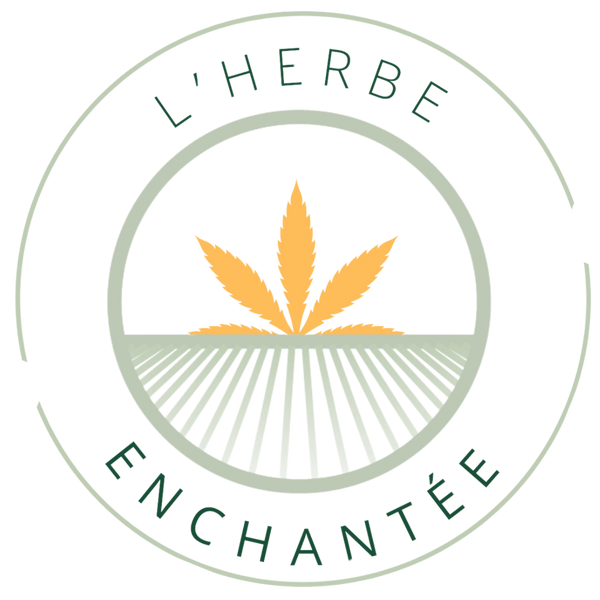In the world of cannabidiol (CBD) concentrates, rosin stands out as the purest and most natural extraction method. This comprehensive guide reveals the secrets of this mechanical process, which fully preserves terpenes and cannabinoids without the use of solvents. Discover its history, health benefits, and optimal uses.
Technical Definition of CBD Rosin
CBD rosin is a concentrate obtained by mechanical hot extraction (between 80°C and 120°C) under high pressure (20 to 30 tons), applied for 30 to 90 seconds on flowers or hash. This physical process allows the resin to be extracted without any chemical additives.
Unlike methods using butane (BHO) or supercritical CO2, rosin retains the full spectrum of the plant's active components: cannabinoids (CBD, CBG, CBC), terpenes, and flavonoids. The result is an amber to gold substance, varying in texture (sauce, budder, or shatter) depending on the extraction parameters.
History and Evolution of the Process
The concept of heat and pressure extraction dates back to the 1970s, when enthusiasts used hair straighteners to extract the resin. However, it wasn't until 2015 that the method became more professional with the advent of dedicated hydraulic presses.
In 2021, a study in the Journal of Cannabis Research confirmed that rosin outperformed other extraction methods in preserving terpenes (+27% vs. CO2). This scientific validation accelerated its adoption by the legal CBD industry.
The 3 Types of Rosin
1. Flower Rosin
Directly extracted from flowers, rich in terpenes but less pure (contains plant matter). Yield 15-25%
2. Hash Rosin
Produced from ice-o-lator or dry sift hash, more concentrated and aromatic. Yield 50-70%
3. Live Rosin
Derived from fresh frozen plants, preserving the original terpene profile. Yield 18-22%
Step-by-Step Extraction Process
1. Selection of Plant Material
Choose flowers rich in trichomes (minimum 15% CBD) or full-melt hash. The quality of the starting material determines 80% of the final result.
2. Preparation
For flower rosin: moisten slightly (62% RH). For hash rosin: preheat to 40°C (cold cure).
3. Press Settings
Ideal temperature: 85-95°C to preserve volatile terpenes. Pressure: 20-30 tons depending on the size of the plates.
4. Extraction
Duration: 45-75 seconds. Use nylon filters (25-160µm) depending on the desired quality.
5. Curing
Maturation for 2-7 days at controlled temperature to stabilize the texture (sauce or budder).
Technical Comparison: Rosin vs. Other Concentrates
| Criteria | Rosin | BHO | CO2 | Ice-o-lator |
|---|---|---|---|---|
| Solvents | None | Butane/Propane | supercritical CO2 | Water + ice |
| Purity | ★★★★★ | ★★★★☆ | ★★★☆☆ | ★★★☆☆ |
| Terpene preservation | 95-100% | 70-85% | 60-75% | 80-90% |
| Yield | 15-70% | 50-90% | 60-85% | 3-10% |
| Necessary equipment | Hydraulic press | Extraction columns | CO2 extractor (€50k+) | Washing machine/bags |
Health Benefits of CBD Rosin
1. Absence of Chemical Residues
Unlike BHO where traces of butane may persist, rosin is completely solvent-free – a major plus for health consumers.
2. Optimal Entourage Effect
The complete preservation of terpenes (myrcene, caryophyllene, pinene) potentiates the effects of CBD via the therapeutic entourage phenomenon.
3. Increased Bioavailability
The concentrated (60-80% CBD) and decarboxylated form offers up to 3 times greater absorption than raw flowers according to a 2023 study.
Conservation and Shelf Life
Rosin can be stored for 12-18 months under optimal conditions:
- Opaque glass container
- Stable temperature (15-18°C)
- Lack of oxygen (vacuum pump)
- Relative humidity < 55%
Whitening or crystallization simply indicates a natural separation of the components - just mix gently at 40°C to re-homogenize.
2024 Trends and Technological Developments
The industry sees the emergence of:
- Automated presses with PID temperature control
- Cold cure techniques for nectar textures
- In situ HPLC analysis for precise dosages
- Live rosin methods from fresh frozen material
Conclusion: Rosin, Pure Gold of CBD
CBD rosin represents the excellence of mechanical extraction, combining purity, safety, and preservation of active compounds. Although requiring specific equipment and offering variable yields, its organoleptic and therapeutic qualities make it the preferred choice for connoisseurs and patients. As the market evolves towards greater transparency, this ancestral method revisited by modern technology is establishing itself as the gold standard for premium concentrates.

